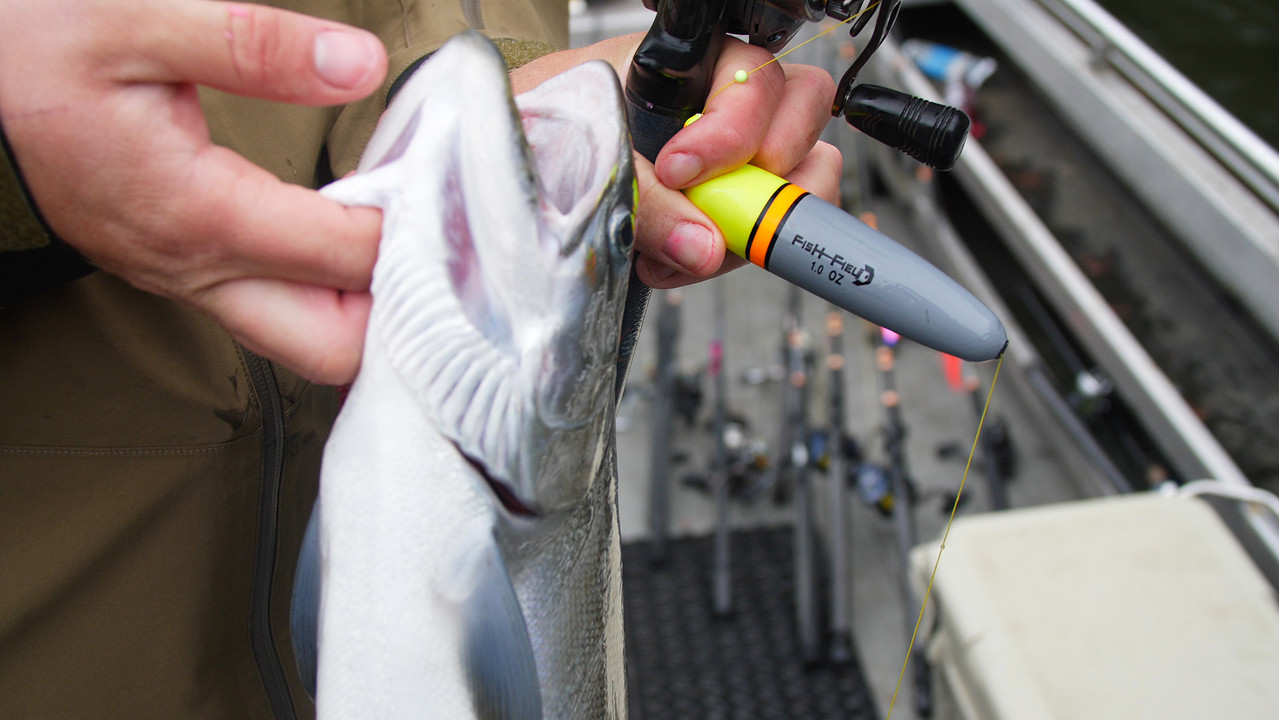Salmon Bobber / Float Fishing
Salmon bobber fishing, also known as float fishing or bobber-dogging, is a technique commonly used to catch salmon in rivers or streams. It is particularly popular among anglers targeting salmon species like Chinook (King) salmon, coho (silver) salmon, and steelhead.
Here's How Salmon Bobber Fishing Typically Works:
1. Equipment: Anglers use a medium fast or fast action fishing rod and reel setup, capable of handling the weight of the fish they're targeting. The fishing line is usually a braided line with a fluorocarbon leader.
2. Bobber: A bobber, also called a float, is attached to the fishing line. Slip bobbers are preferred in the deeper water conditions. The bobber serves two purposes: it keeps the bait at a specific depth and provides a visual indication of when a fish strikes.
3. Terminal Tackle: Below the bobber, anglers typically attach a sliding weight or inline sinker known as a drift weight. This weight allows the bait to sink to the desired depth and holds the steady movement. Additionally, a leader is attached to the drift weight, usually around 3 to 5 feet long, with a hook at the end.
4. Bait/Lure: Common baits used in salmon bobber fishing include cured salmon eggs, sand shrimp, or other natural baits that salmon are known to feed on. Artificial lures, such as salmon jigs, also work great. The bait is typically threaded onto the hook with an egg loop.
5. Technique: After selecting a suitable fishing spot in a river or stream, the angler casts the bobber and bait upstream, allowing it to drift naturally with the current. The bobber floats on the water's surface while the bait sinks to the desired depth, typically where salmon are known to hold.
6. Strike and Hooking: When a salmon bites the bait, the bobber dips or moves, indicating a strike. Anglers must be attentive and ready to set the hook by quickly pulling the rod tip upwards to drive the hook into the fish's mouth.
7. Landing the Fish: Once hooked, anglers fight the fish, using the rod's strength and drag system to tire it out. It's crucial to play with the fish carefully, especially with larger salmon, to avoid breaking the line or losing the fish. A landing net is often used to assist in landing the fish.
It's worth noting that regulations and fishing techniques can vary depending on the specific location and fishing regulations. It's always important to check local fishing regulations and guidelines before engaging in salmon bobber fishing or any other fishing activity.
Find All Our Salmon Tackle Here. Find All Our Steelhead Tackle Here.
EXPLORE POPULAR ARTICLES
-
Crabbing in the Pacific Northwest
Nov 11th 2024Crabbing in the Pacific NorthwestThe Pacific Northwest (PNW) is a region known for its stunning land
-
Salmon Fishing in the Pacific Northwest: A Guide to the Best Angling Experience with Fish-Field
Nov 7th 2024The Pacific Northwest (PNW) is known for its stunning landscapes, rich natural resources, and, of co



